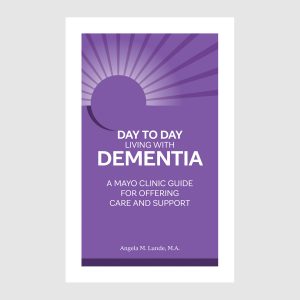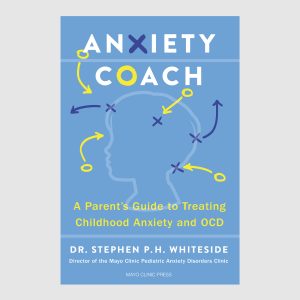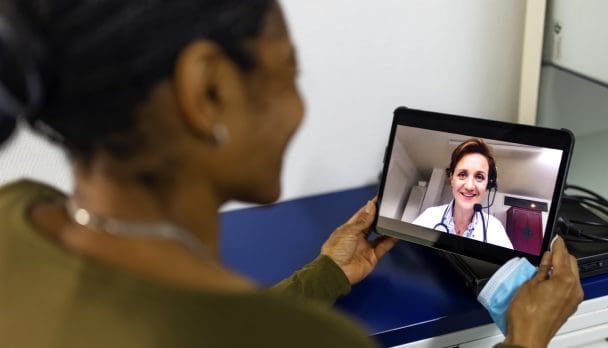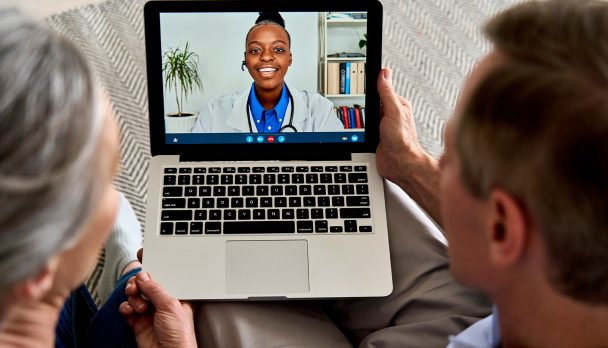
“Diagnosed, An Insider’s Guide for Your Healthcare Journey” by Cris Ross, chief information officer at Mayo Clinic, and Ed Marx, former chief information officer of Cleveland Clinic and now CEO of Marx Advisory, is the perfect guide for anyone who knows they will be needing medical attention or know they will be spending time in a hospital. In this excerpt, Ross, twice treated for stage 3 colorectal cancer, and Marx, survivor of a heart attack and treated for prostate cancer, use their professional and personal experience to describe the importance of community throughout one’s medical journey. In a realistic and helpful way, the authors offer tips and advice to build a care team around you that includes both professionals and friends, family and other community.
Participating in your journey
Once you’ve been diagnosed and things settle down, you’ll have some time to gather your wits and make a plan. We have created a framework aimed at improving your healthcare experience going forward.
Our model is not the only model but describes what we experienced as patients and observed as insiders. We hope it provides a decent framework for how to play the health cards you’ve been dealt.
You and your journey

We’d like you to meet yourself
The center of a serious healthcare journey is you, the person with the challenging diagnosis. Despite the fact that there are millions of people and millions of unique journeys toward health, we believe there is one truth for all patients: the best possible interaction with the healthcare system begins with you, the patient, being clear with yourself and others about your intentions for the journey.
We agree with studies that show that a patient’s attitudes can affect quality of life throughout a healthcare journey. As our attitudes shifted through our months of care, we developed a nonscientific but strongly held opinion that your approach and attitude as you go through a serious healthcare journey need to be true to yourself. It’s easy to get overwhelmed and swept away by the intensity of a healthcare journey, but we think being anchored in the self is the key to everything else. We will explore this more in Chapter 4.
Participate in your own journey
Sometimes a story helps in understanding an idea.
Ed: Some time ago, my coworkers and I embarked on a weekend trip to raft the Youghiogheny River.
Because it was my first rafting experience, I listened keenly to the instructors explaining how to navigate the river and what to do in the event the raft flips or you otherwise fall overboard. “Participate in your own rescue!” they shouted over and over as they explained survival techniques.
They taught us to do the following if we fell into the water.
- If the guide can’t get to you from another raft, keep your legs up and point them downstream.
- If the rescue kayak does not reach you, stay focused. Keep your legs up and facing downstream, and keep your head up.
- In the most dangerous sections, one of the staff is on top of a boulder in the middle of the river. Listen to her instructions.
- But no matter what, participate in your own rescue.
I was the first to fall out.
I turned to focus on the woman atop the boulder. She threw her rope across the path I was most likely to take on the now raging river. “Participate in my own rescue,” I said to myself over and over.
I caught the rope in front of me and held on for dear life as I hit the eddies and tumbled underwater like a shirt in the washing machine. I could not give up. I could not count on anyone to rescue me. I had to participate in my own rescue. I emerged from the eddies as the woman pulled me to safety.
I’ve never rafted again, but I learned the lesson the river had for me.
If there is a single lesson in this book, it is this: participate in your journey.
Nobody can take your place. Nobody can walk this journey for you. But even though that is 100 percent true, you don’t have to be alone.
Don’t go it alone
The second big lesson in this book is how to assemble a village of people around you and a care team that you can depend upon. Doing that successfully is contingent on how fully you initially—and continuously— participate in your own journey. Because we’ve been through this too, we seek to be your fellow travelers. You are why we wrote this book. Let’s do this together.
Ideally, a village
When faced with a health crisis, there can be a temptation to retreat from others and hold everything in. It’s easy to become so stressed and burdened that you withdraw from friends and family. While this can be a natural—and in some ways important—coping reaction, it is vital to resist becoming isolated or lonely.
As the saying goes, it takes a village. So we hope you have a community of family and friends who are there to support you. We also know this is not always the case. For those of you with a strong village of family and/or friends, consider yourself lucky and read through for ideas that might make your village stronger. If family and/or friends are sparse, we share some ideas on how to create a village that might be just you and a caregiver, and how you might grow or create your village in unlikely ways. You can and should reach out to others and have the courage and humility to accept help when it is offered.
For those of you with family and friends who are willing to help, there are some things to become aware of. For example, family and friends have their own feelings and worries about something like a cancer diagnosis. Some may think, Will my loved one die? Others may worry, What am I supposed to say and do? Or, Someone close to me died from cancer, and I can’t face this again. And some may think, My loved one isn’t approaching their care correctly and should have a different attitude!
Also, village members may not be sure how to help. Like patients, members of a village have their own contexts and experiences, which they bring to their interactions with “their” patient’s health journey. Some village members may even need to be kept at arm’s length.
This book was written by two guys with very different approaches to building a village. We know from comparing our experiences that there is no one best way. There are different ways to safely reach out to others. We provide some diverse ideas about how to give yourself permission to ask for help, and how to let those around you know what you need and what they can do.
Building your care team
When you are diagnosed and then go into the hospital, you will discover that there are a lot of people assigned to take care of you in one way or another. We call these people—the doctors, specialists, nurses, assistants, doctor’s office staff members, people pushing you around on a bed—your care team.
In short, your care team is made up of everyone who delivers medical and custodial care or makes decisions about what kinds of care are available and delivered. Some of these people you will interact with directly at one time or another. Some are part of the “invisible” staff in the hospital or clinic who help with and sometimes guide your care.
The first duty of the medical members of your care team is to create a treatment plan and define the path and milestones for care. They are the ones who provide answers to the following questions:
- What is the diagnosis and prognosis?
- What are the options for treatment and care?
- What should the patient expect?
- What actions can the patient take to improve their odds of successful and easy treatment?
- How can care providers take a patient’s priorities and preferences into account?
In Chapter 4 we write about the choices you can make to ensure you have the right care team, are comfortable with them, and know how to engage with them. Ideally, you, your village, and your care team will be aligned in your journey.
Learning to interact with your care team
Especially when you’re facing a difficult diagnosis, it’s natural to defer to a white-coated healthcare provider who you hope will have all the answers and perform miracles. While our clinician colleagues have our respect, have answers to almost everything, and often do seemingly miraculous things, the best approach is to think of the patient-doctor relationship as a partnership. Deference to a care team, taken to an extreme, can create an unintentional and unhealthy relationship in which neither the patient nor the members of the patient’s village have the confidence to ask questions, express preferences, or clarify recommendations. We provide practical examples of how to maintain a good balance between respect for professional expertise and self-advocacy.
The big issues and annoying things about “the system”
Your care team exists within a larger system. Patients sometimes encounter this behind-the-scenes system. It is composed of the insurance companies and government agencies that pay for care; the manufacturers of drugs, devices, and imaging tools; the researchers who find new cures and therapies; the experts at the hospitals and professional associations who define best practices for care; and so on. Sometimes the system is helpful, supportive, and easy to deal with; sometimes it is maddening and frustrating. We will cover the most common frustrations and share some insights that may help make some sense of the quagmire.
The larger community
It’s also important to realize that the system operates in a community that establishes standards and norms by which healthcare is delivered and regulated. This can vary from country to country or in some instances from region to region. The community can have a very positive effect, such as the protection of patient privacy and confidentiality. It can also have a negative effect, particularly in the form of health inequities, in which people from different backgrounds receive different care for reasons unrelated to their diagnosis and prognosis. In some states, for example, state regulations do not support equal delivery of care to women or to transgender individuals. Having a basic knowledge of the community in which your care is delivered is helpful in gaining a better understanding of how your care may be affected and of the complicated nature of healthcare in the United States.
Connecting the circles
These circles — your self, your village, your care team, the system, and your community—are all nested. For someone on a difficult health journey, the broader healthcare system or the community may seem remote, until it is not: when an insurer declines to pay for a particular treatment, when deductibles become overwhelming, when a desired experimental treatment is out of reach or not approved for use, and so on. Conversely, it may seem like the self and the village are insignificant, until they are not: when an individual patient is determined to pursue a particular course of treatment that does not align with the norms of the care team or system, or when the collective voice of the self and the village advocates for change to a system or community that is not responsive to the needs of patients.
In the healthcare environment we aspire to, all these circles are nested. The patient has a strong and clear sense of self and can express their intentions for care. Those intentions are heard by the care team and supported by the village. The system is malleable enough to support a variety of patient intentions and pathways, and it provides support rather than erecting barriers. The community is both empathetic and scientific, it provides equal opportunity for those moving through the system, and it establishes guardrails so that inadequacies are remedied.
We know that this is an aspiration rather than a description of what we have today. Despite remarkable progress and places of distinguished achievement, as a whole the American healthcare system is imperfect and can do better. So while this book is intended to help you with your journey, you may find that you too want to make things better for the next person. If so, come join us as we advocate for the healthcare we want.
Support Cancer Care and Research at Mayo Clinic
Join Ed Marx and Cris Ross, authors of Diagnosed: An Insider’s Guide for Your Healthcare Journey, in supporting the nonprofit mission of Mayo Clinic Comprehensive Cancer Center. With your support, Mayo Clinic is able to provide unparalleled expertise in patient care and innovative research to meet the needs of our patients.
100% of author royalties from the sale of this book benefit important medical research at Mayo Clinic Comprehensive Cancer Center.
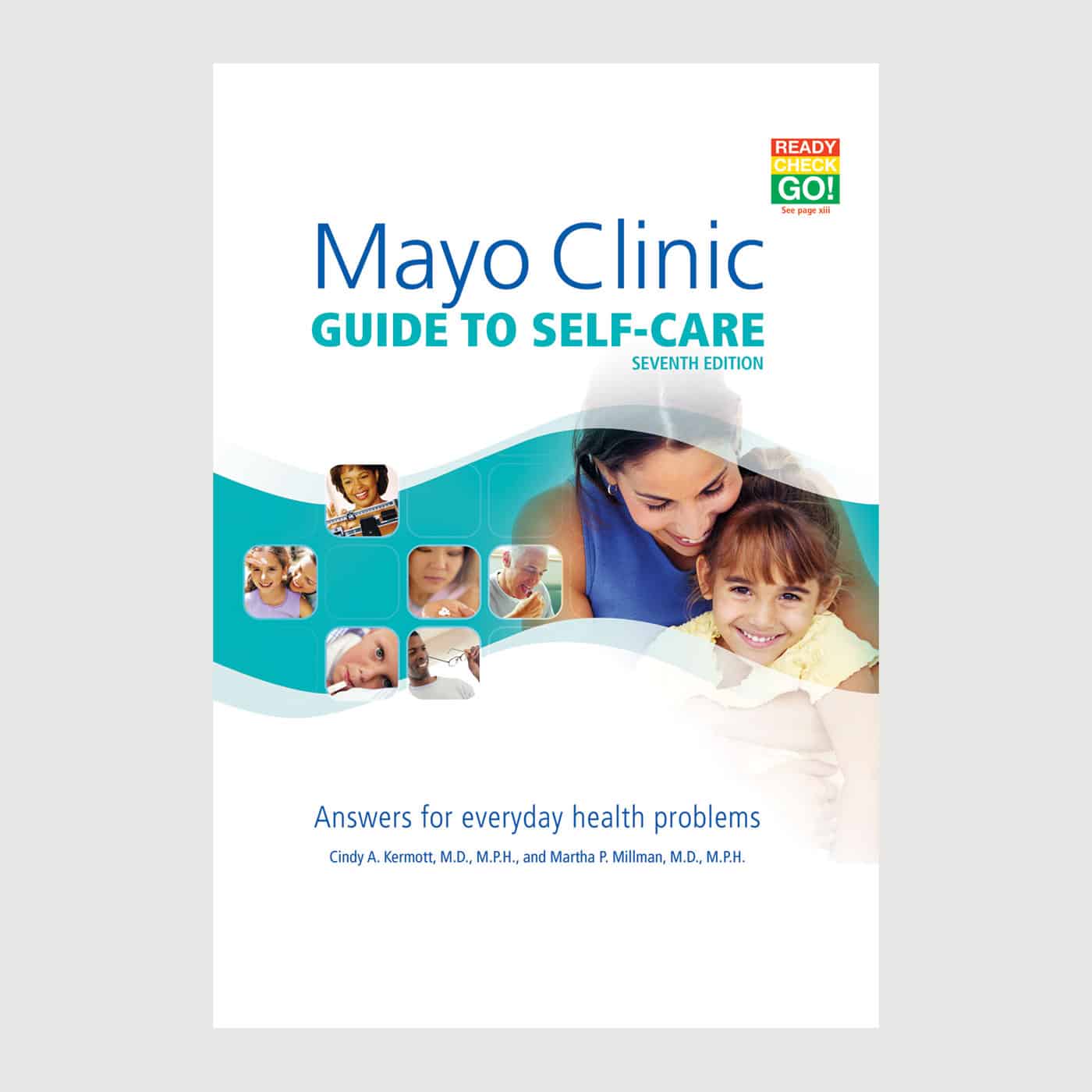
Relevant reading
Mayo Clinic Guide to Self-Care, 7th Edition
Nearly two decades ago, Philip T. Hagen, M.D., had a vision for developing a Mayo Clinic guide for consumers that would empower people to take charge of their health. He called on his colleagues to share their expertise on more than 150 topics. Today, that number has grown to more…










